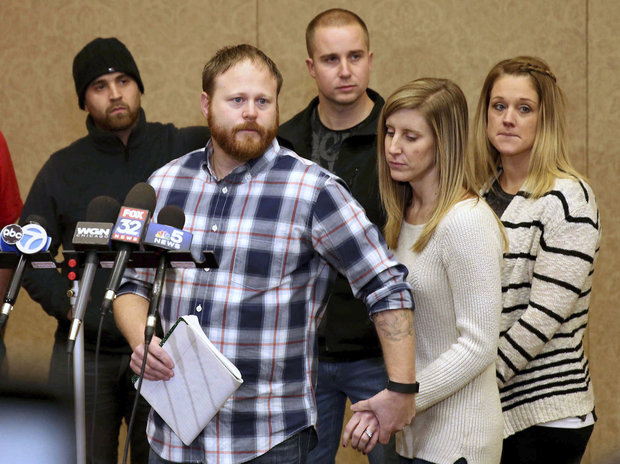Op-ed: Violent beating of a man with a disability illustrates the need for safety & self-defense


Family spokesman David Boyd and others hold a news conference Thursday, Jan. 5, 2017, in Crystal Lake, IllA recent beating of a young man with a disability in Chicago (1) has captured national attention, yet hate-motivated violence is not the only threat people with disabilities face. Bureau of Justice Statistics (2) show that people with disabilities are twice as likely to experience violence as those without disabilities to be victims of all types of violent crimes. In Massachusetts men with disabilities are more likely to be sexually assaulted than women without disabilities, and the rates are even higher for women with disabilities (3). And while this horrific act of violence made the news, people with disabilities are more likely to be assaulted by people they know (4).
Whether the violence is horrific assaults captured on a viral video or sexual abuse shrouded in secrecy, we are doing too little to equip people with disabilities to recognize unsafe situations and protect themselves. In other populations—most notably college women—we know that learning self-defense reduces rates of sexual and other types of violence. National Crime Victimization data shows us that people who forcefully resist violent acts are more likely to stop them (6). Yet we have done too little to make vital safety skills accessible to people who need them most.
Self-defense training is usually inaccessible to people with disabilities. Many modes of self-defense rely on high levels of athletic ability, which may not be possible for those whose disabilities affect their mobility. Some disabilities impact people’s ability to read social cues, so safety tips that rely on situational awareness might not be effective.
Still, the epidemic of violence against people with disabilities is so great that we have to make it a priority. We can’t depend on people without disabilities to keep people with disabilities safe, because so many people with disabilities are assaulted when they are alone– either through abductions like we saw in the video tape from Chicago or because the perpetrator is a family member or caregiver who is supposed to be trustworthy. Part of insisting on the full humanity of people with disabilities is ensuring that they get to be active participants in their own safety.
While we don’t know nearly enough about how to give people with disabilities the tools to protect themselves, new research has shown promising effects of one program for students with disabilities who attend Boston Public Schools (7). Students who took a 10-week safety & self-advocacy classes showed significant increases in their safety-related knowledge, confidence, as well as the number of times they spoke up to refuse unwanted attention. Students were surveyed again a year later and found to have maintained most of the gains they made even with no additional training.
I am the director of a program that travels to schools and community organizations to teach people with disabilities the skills to protect and advocate for themselves. The students we taught last semester used the skills to stop harassment from a stranger, sexual coercion from a dating partner, and bullying from a peer. And while a few forward-thinking school districts are supporting the program, it isn’t reaching nearly enough people.
The epidemic levels of violence against people with disabilities may not make the news everyday but they are happening every day. That means investment in safety education must become a top priority.
By Meg Stone, IMPACT:Ability Program Director
Sources:
- http://www.nytimes.com/2017/01/06/us/chicago-racially-charged-attack-video.html?_r=0
- https://www.bjs.gov/index.cfm?ty=pbdetail&iid=5280
- http://www.ncdsv.org/images/AJPM_SexVictimizationAgainstMenWithDisabilities_2011.pdf
- http://disabilityjustice.org/justice-denied/abuse-and-exploitation/
- http://journals.sagepub.com/doi/abs/10.1177/1077801214526046; http://www.nejm.org/doi/pdf/10.1056/NEJMsa1411131
- http://www.d.umn.edu/cla/faculty/jhamlin/3925/4925HomeComputer/Rape%20myths/10-Year%20Update.pdf
- http://onlinelibrary.wiley.com/doi/10.1111/josh.12211/abstract
- http://www.oregonlive.com/today/index.ssf/2017/01/police_beating_of_mentally_dis.html (Photo)